Is SEO-rich content made of sugar, spice and everything nice? Well, not exactly but there are some key ingredients to scoring a coveted top spot on any search engine results page (SERP).
First, we need to sweeten things up by conducting a thorough keyword audit and assessment. The goal of the audit is to ensure that all content (press releases, social media posts, contributed content or blog posts) produced for any aspect of the PR program is optimized to ensure that keywords and phrases used are aligned with the prevailing search terms in the markets in which your brand competes.
Consider the following when kicking off your keyword audit and assessment:
- Identify short- and long-tail keywords
- Determine which keywords your site is currently ranking for
- Evaluate the data on the keywords’ quantity, quality, and difficulty/competitiveness
- Get familiar with domain authority (DA) and how this scoring system impacts SERPs
Next, apply the findings of the keyword audit and assessment to spice up your content. Once you’ve determined the keywords and phrases that you can compete for based on DA and those that are most important to your audience, be sure to use them and their variations in your content.
Follow these guidelines to create SEO-friendly content:
- Create content that is extremely relevant for that keyword phrase
- Include links from other pages within your website that offer more information on the topic
- Link to high DA outside sources to demonstrate your knowledge and expertise on the topic
- Use your keyword in your heading and then sprinkled equally throughout the post
- Match content types to the buyer’s journey (awareness, consideration, decision, advocacy) by mixing short- and long-form content
Beyond keywords and content, there are various web formatting elements that, when all mixed together, create true SEO-rich content. Everything nice means optimizing tags, titles and descriptions for a fully baked SEO strategy.
Add your keyword to the following before publishing your content:
- Title Tag – Create a unique title tag that is less than 70 characters
- Page URL – Keep URLs short and descriptive for each page
- Meta Description – Draft a meta description that is between 150-160 characters and relevant to your content
- Image ALT Tags and Filenames– Offer some context in the alt text and filename on what the portrays
- Image Filename – Describe what the image is in the filename
The ultimate goal of SEO is to drive traffic to your website and maximize visibility for your brand. Whether it’s Google, Yahoo or another search engine, this recipe will help your brand start building the authority needed to rank higher in more competitive searches. But keep in mind, this is just one slice of the PR pie. Hiring a full service tech PR agency like Rainier will give you access to the whole cookbook.







